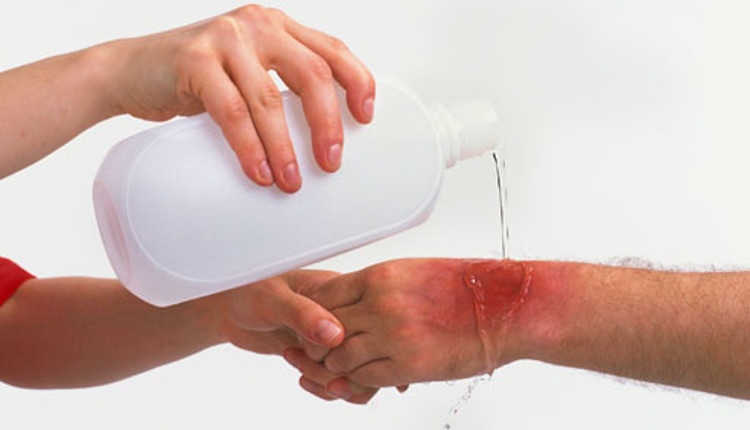
How to manage a prehospital burn?
David Hostler, director of the Emergency Responder and Warfighter Performance Lab at the University at Buffalo (N.Y.), wrote an interesting article on about prehospital burn management.
Burns are very common and many of them require medical treatment. Initial assessments and prehospital burn treatment can definitely influence patient outcomes and that’s why EMS providers must remain knowledgeable about current treatment modalities.
Prehospital burn management: different types of burns
Although burns are not, all the same, all of them damage human skin and some portion of the underlying tissue. There are, however, the very important mechanistic difference between various types of burn that will influence treatment decision.
Thermal burns are the most common and are the results of skin exposure to intense heat, scalding water or open flame. Injury thickness will vary depending on the duration and the intensity of the exposure.
Chemical burns are the result of accidental or intentional exposure to thousands of different chemical compounds. Chemicals that can burn skin are categorized into acids (pH<7), alkalis or bases (pH>7) and organics. In this case, injury is proportional to the concentration of the chemical, the volume of agent on the victim and the duration of the exposure. It is very important to brush away any powders from the skin and flush the area that has been contaminated with plain water.
Electrical burns are those caused by electrical current, both alternating and direct (AC and DC), passing through the body and making it difficult to know what tissue has been affected. This type of burns can lead to internal injuries and will leave little evidence on the skin surface. The entity of the injury will get worse with longer exposure to the electrical source
GCS in prehospital burns management
During initials and continuing assessments, providers should document the circulatory status and Glasgow Coma Score (GCS) to gather information about the course of the burn injury and the patient’s responsiveness to resuscitation.
It is also important to document the circumstances that are surrounding the burn injury, for example, thermal burns resulting from structure fires can be complicated by inhalational injuries. If the victim caught fire providers should take note of the type of clothing, some fibers like cotton burns, but others melt and complicate cutaneous burns. In case of chemical burns, instead, it’s fundamental to document the chemical agent and if its possible its concentration and volume. Cooling thermal burns and decontaminating chemical burns should be part of initial prehospital care.
After the initial treatment and survey, providers should determine the severity and extent of the burn. Extent is reported as the total burn surface area (TBSA), a number that represents the percentage of the total skin surface covered by the burn. The “rule of nines” is typically taught to EMS providers to estimate burn size.
There are hallmarks helping the provider differentiating between partial-thickness (first- and second-degree) and full-thickness (third- and fourth-degree) burns.
A first- degree burn is limited to the epidermis (the outermost layer of skin), its colour is red and is hypersensitive to pain. A second-degree burn involves both the epidermis and some portion of the dermis. This type of burns tends to blister and will appear pink, wet and blanch when touched.
A third-degree burn will destroy the epidermis and the entire dermal layer. It will appear whitish or charred and won’t blanch when touched. A fourth-degree burn also damages the underlying muscle, connective tissue and possibly the bone, and often results in amputation.
Severe shock should be expected when burns exceed one-third of the TBSA and an important element of prehospital burn care is re-establishing the vascular volume to restore tissue perfusion and limit further injury in the areas surrounding the burn.
Serious burn cases should be transported to an accredited burn center and burn victims having significant trauma should be transported initially to a trauma center to be stabilized if the traumatic injuries present a greater life threat than the burn.


